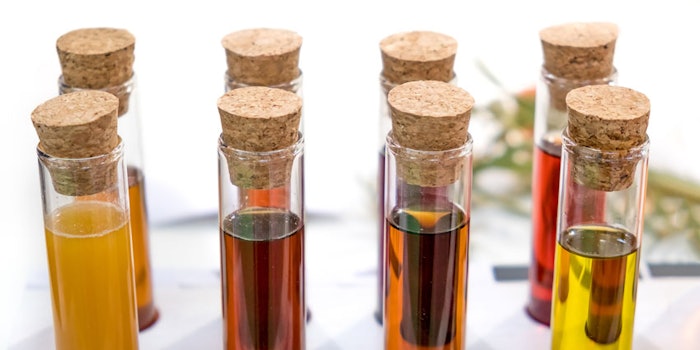
While it is generally good manufacturing practice, neither the U.S. Food and Drug Administration (FDA) nor the European Commission require cosmetic manufacturers to conduct stability testing on products before commercially marketing them. Regardless, routine stability testing can provide cosmetic manufacturers critical data about their product’s safety and shelf life.
Log in to view the full article
While it is generally good manufacturing practice, neither the U.S. Food and Drug Administration (FDA) nor the European Commission require cosmetic manufacturers to conduct stability testing on products before commercially marketing them. Regardless, routine stability testing can provide cosmetic manufacturers critical data about their product’s safety and shelf life.
Such information can prove useful to companies both externally and internally; externally in terms of creating successful products, and internally in terms of product development, material procurement and management, and lifecycle management. This paper provides an overview of the basics manufacturers should consider when developing a stability testing protocol for cosmetic products.
Stability Testing: A Primer
As is well-known, stability testing essentially is an experiment in which a batch of formula is created and placed into different environmental conditions for a set period of time. These conditions vary in temperature and humidity, and are meant to simulate what happens to the product during its life cycle.
In the pharmaceuticals field, both the FDA and the European Medicines Agency require the stability testing of products before they can be sold to consumers. The main purpose is to measure and document the potency of medications up until a predicted expiration date. This data has proven important, especially considering the FDA has cited, within the past two years, stability-related issues as key factors in pharmaceutical recalls. And, as pharmaceutical and cosmetic manufacturers well understand, such product recalls are not only expensive and labor intensive, but they also can seriously damage one’s brand image.
Similar to pharmaceuticals, cosmetics naturally degrade over time, and stability testing can reveal the extent to which they degrade by measuring factors such as:
- The natural degradation rate of key ingredients;
- A product’s ability to resist microbial intrusion;
- The product’s reactivity to packaging materials;
- Impurities exacerbated by the manufacturing process; and
- Product response to heat, humidity and light.
One objective of stability testing is to ensure that a product maintains its intended physical, chemical and microbiological qualities—as well as functionality and aesthetics—when stored under appropriate conditions. Another is to glean data by foreseeing the stability of the cosmetic product over time within its useful life span, as well as compatibility between the formulation and the container material.
Stability Test Protocols
As stated, there currently are no existing enforceable or uniform protocols outlined by the FDA Code of Federal Regulations or European Commission Regulation No. 1223/2009 for the stability testing of cosmetics. The exception is for some OTC products, such as sunscreens, antiperspirants/deodorants and dandruff shampoos. As such, a well-designed internal stability protocol must test those product attributes that are susceptible to change during storage, and that can influence the quality, safety and performance of the product. Stability studies include the evaluation of product quality at specific time intervals of a storage period under controlled conditions.
There are three basic forms of stability tests:
- Physical and chemical integrity: These evaluate the color, odor or fragrance, pH value, viscosity, texture, flow and emulsion stability, or signs of separation.
- Microbiological stability: These evaluate the degree of contamination with bacteria, mold and/or yeast.
- Packaging stability: These evaluate the effect of packaging on the contained product.
Stability testing for cosmetics is typically performed when:
- A new product is developed;
- An existing on-market product has been reformulated;
- The production method has been modified, or production has moved to a new facility or vendor; and/or
- packaging has changed.
Currently, little published research exists to support specific methods for predicting cosmetic shelf life. The reasons for this gap in information include:
- The wide variety and complexity of cosmetic formulas and packaging;
- The proprietary nature of most cosmetic products and their associated stability test methods; and
- The scope of potential changes to be examined, including physical, chemical, microbial, functional or aesthetic.
Method Development
For each formulation type, manufacturers should determine the qualities to be examined, then test them at one or more temperature and humidity conditions. Test parameters should be evaluated and a decision made for each criterion based on the company’s own internal procedures and experience. Evaluations should allow for the deduction of predicted or real stability of the product.
Since time is such a crucial parameter in the development of a new cosmetic product, real-time stability testing is not always feasible. In such situations, accelerated stability testing represents a good alternative. In accelerated stability testing, samples are stored in different elevated temperature and humidity conditions, as determined by product type and market demands.
Given the absence of official guidance from regulatory authorities concerning stability testing for cosmetic products, manufacturers should take into account these considerations:
- Conditions that might accelerate or predict the effects of stress on product consistency, including varying temperatures;
- Changes to a product’s aesthetic properties, such as color, fragrance or texture, under varying conditions;
- Variations in the manufacturing process that might affect a product; and
- Packaging and its effect on formulation, and vice versa.
7 Steps for Stability Testing
Following is a basic format for conducting a cosmetic formula stability test:
Step 1: Batch Production. Calculate how much to produce based on the number of samples being used for testing. Guidelines from the International Conference on Harmonization (ICH) state that three batches at a certain scale must be placed on stability; these batches should be representative of the quality of the material to be made on a production scale.
Step 2: Product Container Filling. The product should be filled in proper intermediate and final packaging, as it is best practice to test both the container and final packaging during stability testing. Samples should be representative of the batch size as well as the range of shades, fragrances and formulations to properly test stability extremes of the product. The closure system should be the same as the packaging proposed for storage and distribution.
Step 3: Initial Test (Time Point Zero). Once samples are filled, one should test for all characteristics to be evaluated later. Exact tests depend on the specific product, but minimally, one should record appearance, color, pH, viscosity readings and fragrance. For aerosol products, spray patterns should be tested.
Step 4: Product Storage. Stability testing requires different temperature and humidity conditions. Some standard temperatures include: 40°C/75% RH; 30°C/65% RH; 25°C/60% RH; and 5°C/no RH.
Step 5: Product Evaluation. For long-term studies, the frequency of testing should be sufficient to establish the stability profile for the formulation. The frequency of testing at long-term storage conditions normally is three months during the first year; every six months during the second year; and once annually thereafter through the proposed re-test period. At the accelerated storage condition, a minimum of three points, including the initial and final time points (e.g. 0, 3 and 6 months), from a six-month study is recommended.
Where an expectation exists that data from accelerated studies is likely to approach significant change criteria, one should conduct increased testing, either by adding samples at the final time point or by including a fourth time point in the study design. When testing at the intermediate storage condition is called for, due to a significant change under accelerated storage conditions, a minimum of four time points, including the initial and final time points (e.g. 0, 6, 9 and 12 months), from a 12-month study is recommended.
Step 6: Determine Stability. After the defined stability study period, one should have a high level of certainty whether the formula is stable or not. If test results yield unsatisfactory or questionable results, additional testing should be performed. Nearly all products will exhibit some change, so it will be up to the manufacturer to determine whether the product passes.
Step 7: Conclusion Report. Once testing has been completed, a conclusion report on stability should be compiled, including:
- Identification of the lab conducting the testing (if a third-party contractor is used);
- Identification of the product;
- Samples of primary packaging material used in the test;
- Description of the methodology used to determine the product’s minimum durability, study conditions and results of the study; and
- The signature of the person responsible for the study.
Conclusion
It can benefit cosmetic manufacturers to incorporate routine stability testing into the lifecycle of their products. By obtaining this critical data about a product, manufacturers can create better products while improving efficiencies in terms of material management. Furthermore, while the largest global regulatory authorities do not currently require cosmetic stability testing, they do require such testing for pharmaceuticals. This indicates at least some potential that the same expectation could be levied on cosmetic manufacturers eventually. In that event, early-adopter cosmetic manufacturers with routine stability testing processes in place would be well positioned to respond.










